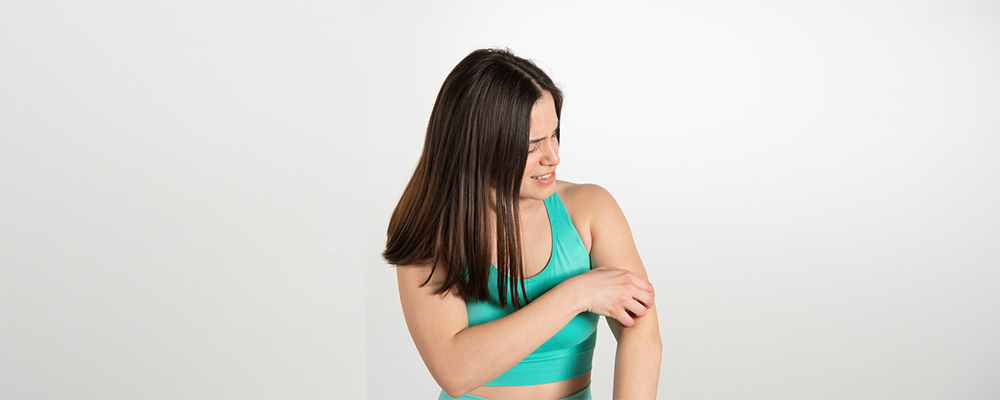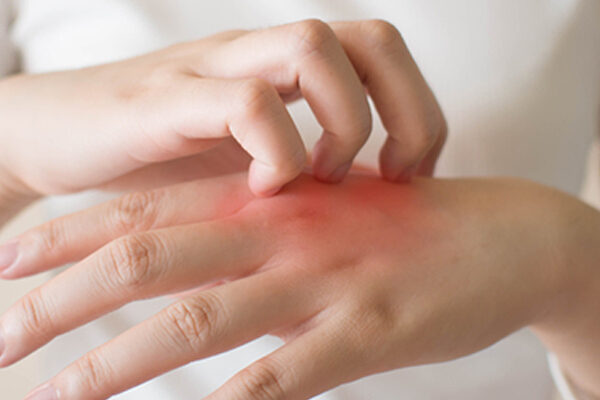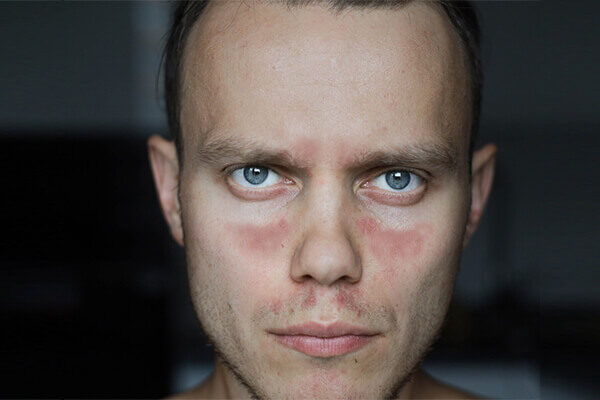Updated on December 23, 2022
Introduction
At the gym, you might hear about an athlete who is “allergic to their own sweat.” Most likely, it is not perspiration causing the rash, but rather the body’s heating up through exercise. This is referred to as exercise-induced urticaria. The condition can be triggered by a variety of heat-producing activities, including jogging or aerobic workouts, even hot baths or showers, eating spicy foods, and emotional stress. It is a rare clinical condition that causes flushing, pruritus, and hives after physical exertion.
Exercise-induced urticaria and anaphylaxis cause severe clinical manifestations in a small number of patients. Rashes caused by exercise can be unpleasant and unpredictable. However, with the assistance of a dermatologist, you can identify the underlying cause of your skin rash and begin treatment.
What is Exercise-induced Urticaria?
It is a rare but potentially fatal hypersensitivity reaction triggered by physical activity. Your skin may develop hives, bumps, or welts, or it may flush and turn red. The rashes may also be itchy.
Rash triggers will differ from person to person. Some people only get rashes from exercise, while others get rashes when they are stressed or eat spicy foods. In either case, keep an eye out for potential triggers.
Exercise-induced Urticaria Symptoms
Among the most common are:
- Hives
- Itching
- Flushing skin (turns red)
- Breathing difficulties or a choking sensation
- Cramps in the stomach
- Headache
- Facial, tongue, or hand swelling
While these symptoms are usually mild, some people may experience severe complications such as low blood pressure and severe breathing difficulties.
Exercise-induced Urticaria and Anaphylaxis Prevalence
Exercise-induced anaphylaxis accounts for 5-15% of anaphylaxis cases. The majority of affected patients exercise on a regular basis and only occasionally experience anaphylaxis.
Exercise-induced anaphylaxis is usually sporadic, but some familial cases have been reported. Onset usually occurs between the ages of 10 and 30, but cases have been reported in children as young as 3 years old. Exercise-induced anaphylaxis affects women twice as much as men.
Types of Exercise-induced Urticaria
The following are the three major types of exercise-induced urticaria and anaphylaxis:
- Cholinergic urticaria,
- Classic exercise-induced anaphylaxis, and
- Variant type of exercise-induced anaphylaxis.
Exercise-induced Urticaria and Anaphylaxis Pathophysiology
The exact causes of exercise-induced anaphylaxis is unknown. Skin biopsies show that mast cell degranulation occurs during symptomatic attacks. The symptoms are most likely caused by vasoactive mediators released by mast cells. Plasma histamine levels have been found to rise in patients suffering from classic and variant forms of exercise-induced anaphylaxis and cholinergic urticaria.
Furthermore, other mast cell degranulation products, such as serum tryptase and leukotrienes, have been found to be elevated in symptomatic patients with exercise-induced anaphylaxis.
Exercise-induced Urticaria Diagnosis
The diagnosis of exercise-induced urticaria or anaphylaxis can often be made on the basis of history. A history of exercise-induced cutaneous warmth, erythema, and pruritus, with or without urticaria, suggests either condition.
Observation of skin lesions and a history of symptoms with passive warming (i.e., during a shower or a bath) help differentiate cholinergic urticaria from exercise-induced anaphylaxis. A passive warming test can be performed if the diagnosis is still in doubt. Immersing the patient in warm water or raising the ambient temperature in a controlled environment can result in a rise in core body temperature of 0.5°C to 1.5°C (0.9°F to 2.7°F). In patients with cholinergic urticaria, this test will result in an increase in plasma histamine levels with or without urticaria, but not in those with exercise-induced anaphylaxis.
An exercise challenge test can be performed if a patient is suspected of having exercise-induced anaphylaxis. Because symptoms in exercise-induced anaphylaxis vary in reproducibility, a negative test does not rule this out as a diagnosis. A positive test, on the other hand, aids in the confirmation of the diagnosis. The exercise challenge test should take place in a controlled environment with emergency equipment available.
In people with cholinergic urticaria, the methacholine skin test may produce a positive result. Methacholine (100 units in saline solution) is injected intradermally causing the characteristic micropapular hives. This test is positive in roughly one-third of the patients. Thus, a negative test does not exclude cholinergic urticaria as a diagnosis. Patients who have a positive test usually have more severe cholinergic urticaria.
Is there an Exercise-induced Urticaria Cure?
The treatment of exercise-induced anaphylaxis is similar to that of other types of anaphylaxis.
This includes:
- Adrenaline – intramuscularly, to decrease airway swelling and cardiovascular symptoms.
- Systemic glucocorticosteroids – to decrease the inflammatory reaction.
- Antihistamines – to counteract the effect of released histamine.
Patients should avoid the trigger in the future. If a patient’s regular routine includes exercise, they may need to be taught how to use an adrenaline pen or a pre-loaded adrenaline syringe in an emergency. Patients should be able to recognize the early symptoms of exercise-induced urticaria.
Exercise-induced Urticaria and Anaphylaxis Prevention
If you break out in hives, stop or reduce your workouts. If certain types of exercise cause you to break out more frequently, try different activities instead. To prevent or relieve hives, cool your hot skin:
- Take a cool shower, apply a cool cloth to your skin, or stand in front of a fan.
- Wear loose clothes.
- Maintain a cool temperature in your home and bedroom.
- If stress causes your hives, try to avoid stressful situations. Find ways to relax and manage it.
Summary
Exercise rashes, also known as exercise-induced urticaria, occur when physical activity triggers allergy-like symptoms. The skin might break out in hives, bumps, or welts, or the skin might flush and turn red. These rashes could also be itchy. Triggers will differ for each individual.
While the exact cause of these rashes is unknown, they are most likely caused by a rise in body temperature or an allergy to sweat. Some people only get rashes from exercise, while others get rashes when they are stressed or after eating spicy foods.
Be sure to pay attention to potential triggers if you’re noticing regular rashes. Always seek medical attention if your symptoms are severe.





